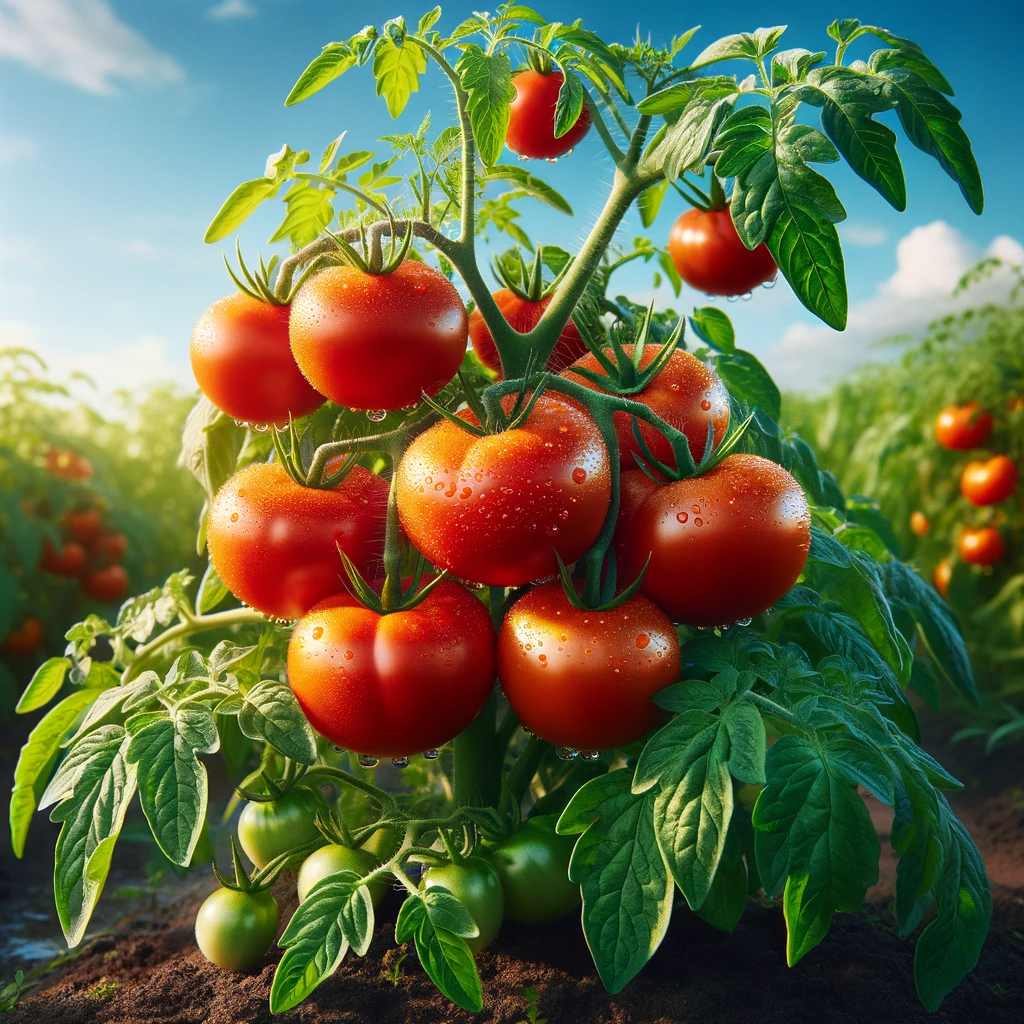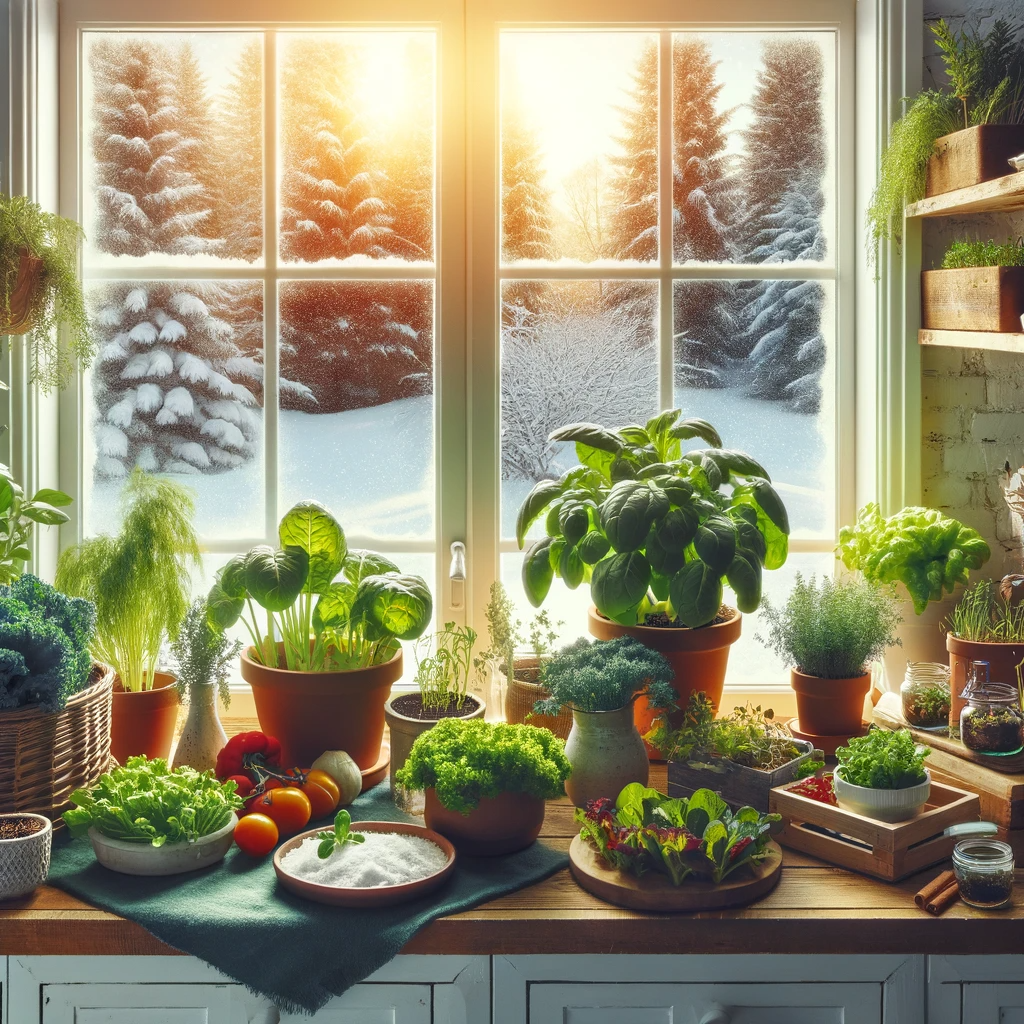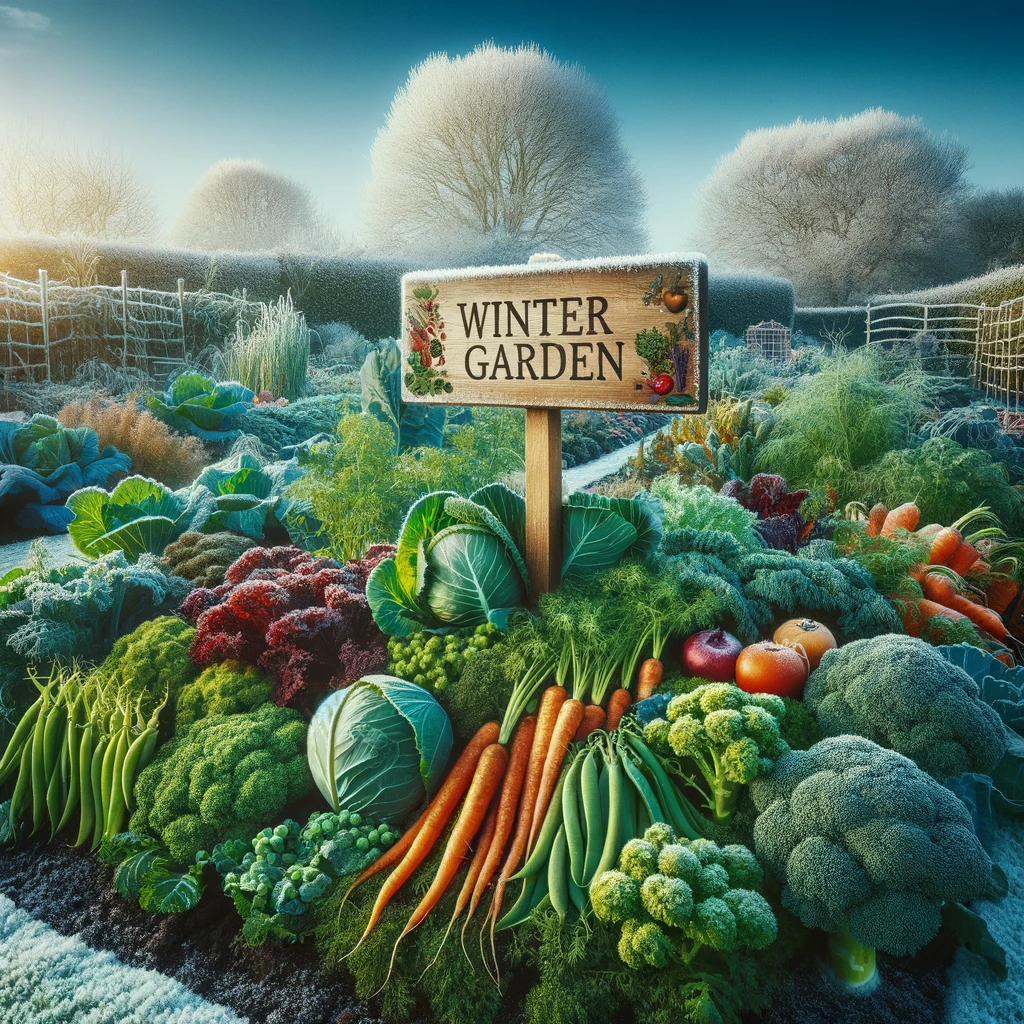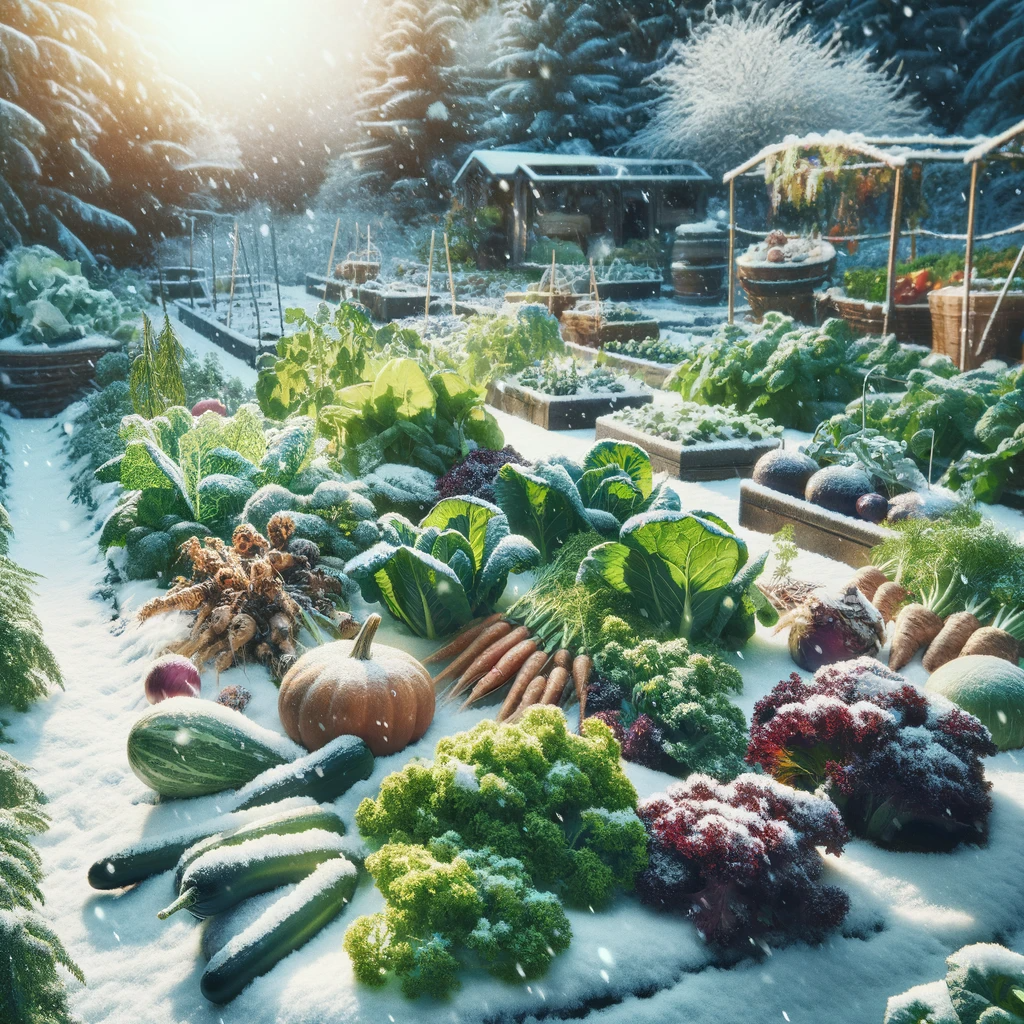Growing Tomato Plants: The Ultimate Guide to Growing Tomatoes
Welcome to the world of tomato gardening, where patience and care yield the sweetest fruits. Tomatoes are not just a culinary staple; they are a badge of honor for gardeners, a symbol of their dedication to their craft. Whether you’re a seasoned gardener or a beginner with a newfound green thumb, this guide is crafted to help you navigate the nuances of growing luscious, vibrant tomato plants. From seedling to harvest, we’ll walk you through each step, answering the most common queries and sharing expert advice to ensure your tomato plants thrive. Let’s embark on this tomato journey together, cultivating a garden that’s both a feast for the eyes and the palate.

How to Prune Tomato Plants
Pruning is an essential technique in tomato plant care that can lead to more fruitful and vigorous growth. But it’s not just about getting higher yields; it’s also about maintaining healthy plants. Here’s a step-by-step guide on how to prune your tomato plants effectively:
Understanding the Purpose of Pruning
Pruning tomato plants helps to direct the plant’s energy towards fruit production rather than vegetative growth. It increases air circulation, which reduces the risk of disease, and helps to expose the fruit to the sun for better ripening.
Identifying What to Prune
In tomato plants, the main areas to focus on when pruning are the “suckers.” These are the shoots that grow in the axils, or the angles between the main stem and the branches. If left unpruned, they can become full-fledged branches, making the plant bushy and unwieldy.
The Pruning Process
- Choose the Right Time: The best time to start pruning is once the plant is about 1-2 feet tall, or when it has several leaves on the stem.
- Select the Suckers to Remove: Look for suckers that are smaller in size, as these are easier to remove and less likely to harm the plant.
- Prune Properly: Use your fingers or a pair of clean, sharp scissors to pinch or snip the suckers. Be sure to cut close to the stem to avoid leaving stubs that could rot.
- Maintenance Pruning: Continue to check your plants every week or so, as new suckers can form throughout the growing season.
Tips for Pruning
- Avoid Over-Pruning: Be cautious not to remove too many leaves, as they are necessary for photosynthesis.
- Support Your Plants: As you prune, ensure your plants are staked or caged to support the increased weight of the fruit.
- Be Gentle: Handle the plant gently to avoid damaging the stems or fruit.
Pruning is an art that requires a balance between removing excess growth and maintaining enough foliage for healthy tomato production. With these tips, your tomato plants will be well-groomed for optimal growth and yield.
How Far Apart to Plant Tomatoes
Proper spacing is critical for healthy tomato plants. It allows for adequate air flow, which helps prevent fungal diseases, and ensures that each plant has enough soil nutrients and sunlight to thrive. Let’s explore the specifics of tomato plant spacing.
The Basics of Tomato Plant Spacing
Tomato plants come in two main types: determinate and indeterminate. Determinate, or bush-type tomatoes, tend to be more compact and require less space. Indeterminate, or vining tomatoes, grow taller and generally need more room to spread out.
Spacing Guidelines
- Determinate Tomatoes: These should be planted about 18 to 24 inches apart in a row. The rows should be spaced about 3 feet apart.
- Indeterminate Tomatoes: These need more space, typically about 24 to 36 inches apart, with rows spaced 3 to 4 feet apart.
Considering the Growth Habit
Understanding the growth habit of the tomato variety you are planting is crucial. Some heirloom varieties, for example, can become very large and may require additional space.
Tips for Effective Spacing
- Use Supports: Both determinate and indeterminate tomatoes benefit from support, such as cages or stakes. This doesn’t reduce the need for spacing but can help manage the plant’s growth.
- Plan for Access: Ensure there’s enough space between rows or plants for you to move around for harvesting and maintenance.
- Factor in Sunlight: More space between plants means more sunlight can reach the lower leaves, aiding in photosynthesis and fruit development.
When to Plant Tomatoes
Timing your tomato planting is a delicate dance with Mother Nature. Plant too early, and you risk frost damage; plant too late, and your tomatoes might not have enough time to mature before the first fall frost. Here’s how to get the timing right:
Understanding Frost Dates
The key to planting tomatoes is knowing your local frost dates. Tomatoes are warm-weather plants and can be severely damaged by frost.
- Last Frost Date: Wait until after the last expected spring frost to plant your tomatoes outdoors. This date varies by region, so check with a local garden center or use online resources to find out the date for your area.
- First Frost Date: Consider the first expected fall frost date to ensure your plants have enough time to grow and produce fruit before the cold sets in.
Starting Seeds Indoors
For many climates, starting tomato seeds indoors is a necessity. This allows you to get a head start on the growing season.
- When to Start: Begin 6 to 8 weeks before the last frost date. This gives seedlings enough time to grow strong before transplanting.
- Transplanting: Once the danger of frost has passed and your seedlings are about 6-8 inches tall, they’re ready to move outdoors.
Acclimating Seedlings
Seedlings raised indoors need to be acclimated to outdoor conditions, a process called hardening off.
- How to Harden Off: Gradually expose your tomato seedlings to outdoor conditions over a period of a week. Start with a few hours a day in a sheltered location and slowly increase their time outside until they’re ready to stay out overnight.
Tips for Timely Planting
- Watch the Weather: Even after the last frost date, keep an eye on the weather forecast. A surprise cold snap can occur, so be prepared to protect your plants with covers if necessary.
- Soil Temperature: Tomatoes prefer warm soil. Planting should be done when the soil temperature is consistently above 60°F (16°C).
By understanding and respecting the rhythm of the seasons, you can time your tomato planting for the best chance of success. With the right timing, your tomato plants will have the full benefit of the growing season to develop into a bountiful harvest.
How to Plant Tomatoes
Planting tomatoes is more than just putting seeds or seedlings into the ground; it’s about laying the foundation for the growth ahead. Here’s how to ensure that your tomato plants are planted with care and positioned for optimal growth.
Preparing the Soil
Good soil preparation is key to healthy tomato plants.
- Enrich the Soil: Amend your garden soil with compost or well-rotted manure to provide nutrients. Tomatoes prefer a slightly acidic to neutral pH (6.0-7.0).
- Loosen the Ground: Till the soil to a depth of at least 6 inches to allow for good root development.
Planting Seedlings
If you’re starting with seedlings, whether store-bought or grown indoors, proper planting technique is essential.
- Dig the Hole: Make the hole deep enough to bury the stem up to the first set of true leaves. New roots will grow along the buried stem, giving the plant a strong foundation.
- Spacing: Refer back to the section on how far apart to plant tomatoes to ensure each plant has enough room to grow.
- Orientation: Plant your tomatoes in a north-south direction if possible. This maximizes sun exposure and air flow.
Watering After Planting
Watering is crucial immediately after planting to help settle the soil around the roots and eliminate air pockets.
- Water Generously: Give each plant a good drink of water at the base, avoiding wetting the leaves to reduce the risk of disease.
- Mulching: After watering, apply a layer of mulch around the base to help retain moisture and control weeds.
Supporting Your Tomatoes
Decide on your support method early and install it at planting time to avoid disturbing the roots later.
- Cages or Stakes: For determinate varieties, cages may be sufficient. Indeterminate varieties often do best with staking or trellising.
Tips for Planting Success
- Companion Planting: Consider planting basil, marigolds, or other companion plants that can repel pests and enhance growth.
- Regular Monitoring: Check your plants regularly for signs of pests or disease, especially in the early stages after planting.
By following these planting steps, you can ensure your tomato plants are well-positioned to grow vigorously and healthily, providing a rewarding harvest for you to enjoy.
How to Trim Tomato Plants
Trimming, or thinning, is an important step in caring for tomato plants. It helps to remove unnecessary growth, which can lead to larger, healthier fruits. Here’s how to approach trimming your tomato plants:
Identifying What to Trim
- Excess Leaves: Look for older leaves that are touching the ground, as these can harbor pests and diseases. Also, remove any yellowing or diseased leaves to maintain plant health.
- Non-Productive Branches: Trim off branches that don’t bear flowers or fruit, as they’re using up energy that could go towards producing tomatoes.
The Trimming Process
- Use the Right Tools: A pair of clean, sharp pruning shears is the best tool for trimming tomato plants.
- Be Selective: Focus on the lower part of the plant to increase air circulation. Don’t trim more than one-third of the plant at any one time to avoid stress.
- Clean Cuts: Make cuts clean and close to the main stem to prevent damage and disease.
Timing for Trimming
- Early Season: Start early in the season to establish good plant structure and continue as needed throughout the growing season.
- After Rain: Wait until the foliage is dry before trimming to reduce the spread of disease.
Trimming your tomato plants is a balance between maintaining plant health and encouraging fruit production. With careful attention and regular maintenance, you can ensure that your tomato plants are not wasting energy on unnecessary growth.
What Are Suckers on Tomato Plants
Suckers are small shoots that grow out of the joint where a leaf attaches to the stem. In tomato plants, they can grow quite vigorously and turn into full-sized branches if left unchecked.
Identifying Suckers
- Location: Look for suckers in the crotch joint of two branches.
- Appearance: They start as small shoots and can be identified early on.
Managing Suckers
- Pinching Off: When they are small, simply pinch them off with your fingers. This is the least stressful method for the plant.
- Pruning Shears: For larger suckers, use pruning shears to avoid damaging the plant.
- Selective Removal: You don’t have to remove all suckers. If you want a bushier plant or are growing in a cage, you may choose to leave some to develop.
Benefits of Removing Suckers
- Energy Focus: Removing suckers directs the plant’s energy into growing bigger and better fruits.
- Airflow and Sunlight: It helps improve airflow and sunlight penetration, which is beneficial for fruit ripening and overall plant health.
Understanding and managing suckers is a key part of tomato plant maintenance. By keeping an eye on these sprouts and removing them as necessary, you can help your tomato plants concentrate their energy on producing a plentiful crop.
What to Plant With Tomatoes
Companion planting is a time-honored gardening technique that involves placing plants together that can benefit each other in some way. For tomatoes, certain companions can improve growth, enhance flavor, and deter pests.
Good Companions for Tomatoes
- Basil: This herb is said to improve the flavor of tomatoes and also repels flies and mosquitoes.
- Marigolds: The strong scent of marigolds can deter tomato pests like nematodes and tomato hornworms.
- Carrots: Growing carrots with tomatoes can improve the soil structure and benefit both plants.
Considerations for Companion Planting
- Spacing: Ensure that companion plants do not compete with tomatoes for sunlight, water, or nutrients.
- Diversity: A diverse garden can prevent the spread of disease and reduce the likelihood of major pest infestations.
By thoughtfully selecting companion plants for your tomatoes, you can create a more harmonious and productive garden ecosystem.
How Often Should You Water Tomato Plants
Watering is a crucial part of tomato care, and getting it right can mean the difference between a good crop and a great one. Here are some guidelines on how to water your tomato plants for optimal health and productivity.
Watering Frequency
- Consistency is Key: Tomatoes prefer a consistent watering schedule. How often you water will depend on your climate and weather conditions but aim for at least once every two to three days during the warmer months.
- Check the Soil: Before watering, check the soil moisture. The top inch of soil should be dry to the touch. If it’s still moist, wait another day before watering.
Watering Amount
- Deep Watering: When you water, do so deeply to encourage roots to grow down, making them more drought-resistant. Aim for at least 1 inch of water per week, and up to 2 inches during the hottest part of the summer.
Watering Techniques
- Drip Irrigation: This is ideal for delivering water directly to the roots while keeping the leaves dry, which helps prevent disease.
- Early Morning Watering: Watering in the morning is best as it allows the foliage to dry out during the day, reducing the risk of disease.
- Avoid Overhead Watering: This can spread disease and doesn’t ensure the roots get enough water.
Proper watering will help prevent common tomato problems such as blossom end rot and split fruits, which are often the result of inconsistent watering.
Eggshells as a Calcium Source
Eggshells are primarily made of calcium carbonate, a vital nutrient for preventing blossom end rot in tomatoes, a common issue caused by calcium deficiency.
How to Use Eggshells
- Preparation: Rinse and dry your eggshells, then crush them into small pieces or powder for quicker decomposition.
- Application: Mix the crushed eggshells into the soil at planting time or sprinkle them around the base of your tomato plants. They slowly release calcium as they break down.
Banana Peels for Potassium and More
Banana peels are rich in potassium, an essential nutrient for overall plant health, and particularly crucial for flowering and fruit development in tomatoes.
How to Use Banana Peels
- Preparation: Cut banana peels into small pieces to speed up decomposition.
- Composting: Add them to your compost pile, where they’ll break down and enrich the compost with potassium and other nutrients.
- Direct Application: Bury small pieces of banana peel just under the surface of the soil near the tomato plants, or prepare a banana peel tea by soaking the peels in water for a few days and then using the water for your plants.
The Benefits of Using Eggshells and Banana Peels
- Nutrient-Rich: Both provide essential nutrients—calcium from eggshells and potassium from banana peels—that support the healthy growth of tomato plants.
- Eco-Friendly: Utilizing these kitchen scraps as fertilizers is a sustainable practice that reduces waste and the need for synthetic fertilizers.
- Improved Soil Health: Over time, these natural fertilizers contribute to better soil structure and increased microbial activity.
By incorporating eggshells and banana peels into your tomato gardening routine, you’re not just feeding your plants; you’re embracing a cycle of sustainability that benefits your garden and the environment.
Fermenting Tomatoes: Enhancing Flavor and Nutritional Value
Fermentation is a fantastic way to preserve and enhance the flavor of tomatoes while boosting their nutritional benefits. Fermented tomatoes can be a tangy, savory addition to a variety of dishes. Here’s how to ferment tomatoes and a simple recipe to get you started.
Benefits of Fermenting Tomatoes
- Improved Digestibility: Fermentation breaks down some of the compounds in tomatoes, making them easier to digest.
- Enhanced Nutrient Profile: Fermentation increases levels of beneficial bacteria and can enhance the bioavailability of nutrients.
- Unique Flavor: It imparts a distinct, tangy flavor that can add depth to many culinary preparations.
Basic Fermented Tomato Recipe
Ingredients:
- Ripe tomatoes (cherry or grape varieties work well)
- Non-iodized salt (approximately 2-3% of the weight of the tomatoes)
- Fresh herbs (optional, such as basil, dill, or garlic for added flavor)
- Clean, sterilized jars
Instructions:
- Prepare the Tomatoes: Wash the tomatoes and herbs thoroughly. If using larger tomatoes, you can cut them into smaller pieces. Leave smaller varieties like cherry tomatoes whole.
- Prepare the Brine: Dissolve the salt in a small amount of water to create a brine. The brine concentration should be about 2-3% salt by weight. For example, for 1 liter of water, use 20-30 grams of salt.
- Packing the Jars: Place the tomatoes in the sterilized jars, adding in the herbs if you’re using them. Pour the brine over the tomatoes, ensuring they are completely submerged. Leave about an inch of space at the top of the jar.
- Seal and Ferment: Close the jar with a lid. If you’re using a standard jar, you may need to “burp” it daily to release gas buildup. Alternatively, use an airlock lid to allow gases to escape without letting air in.
- Fermentation Period: Store the jar at room temperature, away from direct sunlight. The fermentation process typically takes about 2-5 days. You can taste the tomatoes during the process to determine when they’ve reached your desired level of fermentation.
- Storage: Once fermented to your liking, store the jar in the refrigerator. This slows down the fermentation process and the tomatoes can be enjoyed for several weeks.
Fermented tomatoes can be a delightful addition to salads, sandwiches, or as a part of a cheese platter. This simple recipe not only preserves your tomato harvest but also offers a unique way to enjoy the rich flavors and enhanced nutritional benefits of fermented foods.
Frequently Asked Questions About Tomato Plant Care
Which leaves to remove from tomato plants?
Remove any leaves that are diseased, yellowing, or damaged. It’s also beneficial to remove lower leaves that touch the ground to prevent disease and improve air circulation.
Should I prune lower tomato branches?
Yes, pruning lower branches helps to improve air circulation and reduce the risk of soil-borne diseases affecting your plants.
Should I pinch off tomato flowers?
Pinch off the flowers of a tomato plant early in the growing season to encourage stronger root and plant development. Once the plant is well-established, you can stop pinching off the flowers to allow fruit to develop.
Can you prune tomato plants too much?
Yes, over-pruning can stress the plant, reduce fruit production, and expose the plant to sunscald due to a lack of foliage.
Do tomatoes plants like coffee grounds?
Tomato plants can benefit from coffee grounds in moderation. Coffee grounds add organic material to the soil, improving drainage, water retention, and aeration. They also contain nitrogen, which is an essential nutrient for tomatoes.
What does sunscald look like on tomatoes?
Sunscald on tomatoes appears as a whitish, blistered area on the side of the fruit that’s been exposed to too much direct sunlight, typically during hot weather.
Do you pick the yellow flowers off tomato plants?
No, you should not pick the yellow flowers off tomato plants as these are the blossoms that will develop into fruit.
What part of the tomato plant do you pinch off?
Pinch off the suckers, which are the small shoots that grow out of the joints where leaves attach to the main stem.
When should I start pinching my tomatoes?
Start pinching tomatoes when the plant is about 12-18 inches tall to help it focus energy on the remaining branches and fruit.
Should you pull the bottom leaves off tomato plants?
Yes, removing the bottom leaves, especially those closer to the soil, can help reduce the risk of fungal diseases and improve air flow.
What tomatoes should not be pruned?
Generally, determinate (or bush) tomato varieties should not be pruned too much because they have a predetermined number of branches and fruits they will produce.
Should tomato leaves touching the ground?
No, tomato leaves touching the ground should be pruned to prevent them from picking up soil-borne diseases.
Should I cut off the yellow leaves on my tomato plant?
Yes, yellow leaves are often a sign of stress or disease and should be removed to prevent potential spread and improve plant health.
Can you spray tomato leaves with water?
While you can spray tomato leaves with water, it’s best to water at the base of the plant to avoid wetting the leaves, which can increase the risk of fungal diseases. If you must spray the leaves, do so early in the day so that any water on the foliage can dry before the cooler evening temperatures.






